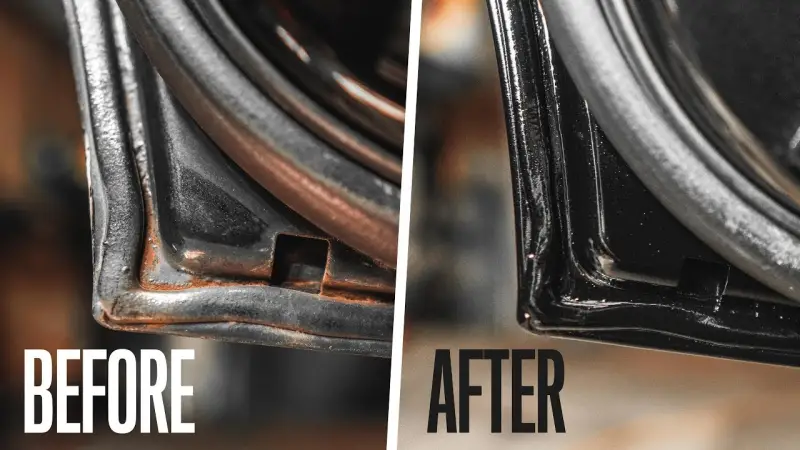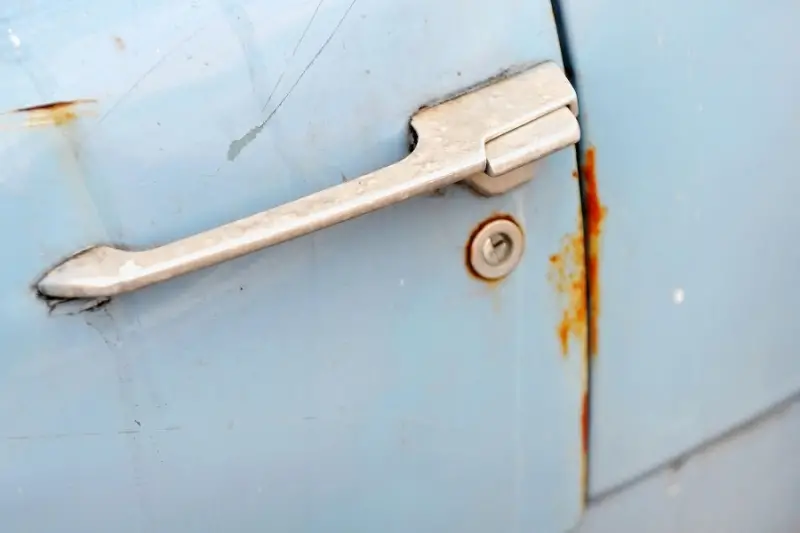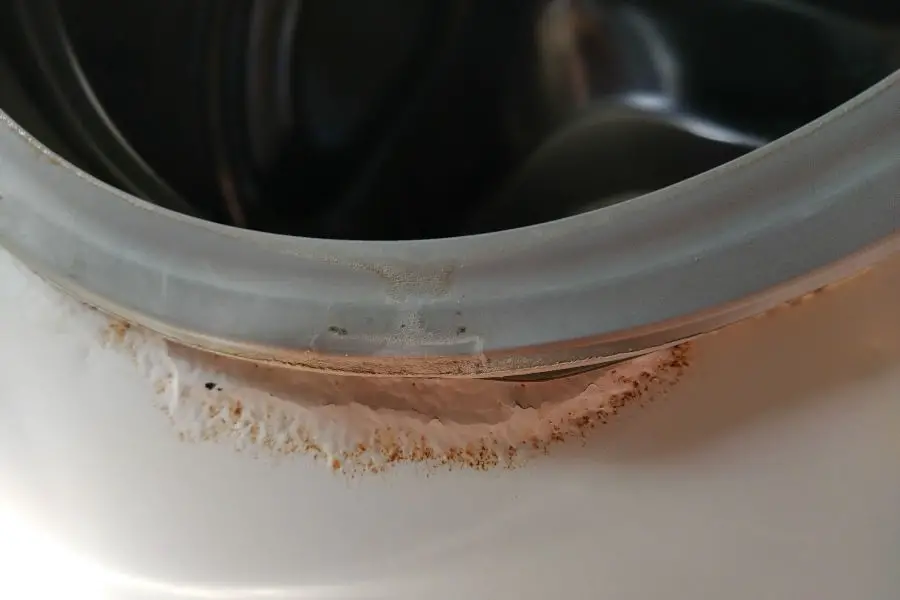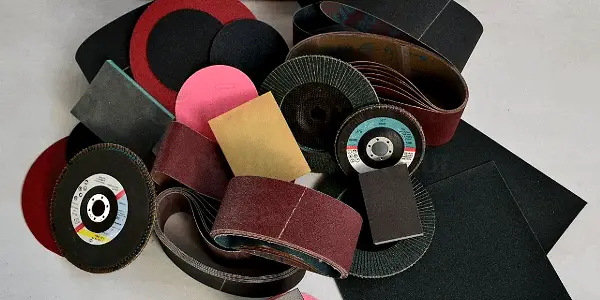Rust is a common issue that affects car owners. Not only does it detract from the appearance of your vehicle, but it can also weaken the metal and cause structural damage if left untreated. In this blog post, we’ll be discussing the various methods for removing rust from car doors, including both DIY options and professional treatments. We’ll also be exploring the pros and cons of each method, so you can choose the best approach for your specific needs.
Do you have an old car that has started to show signs of rust on the doors? Or maybe you recently purchased a used car and are looking to restore its appearance. Whatever your situation, removing rust from car doors is an important step in maintaining the health and value of your vehicle. In this post, we’ll dive into the most effective methods for removing rust and help you make an informed decision about how to tackle this problem. So, grab a cup of coffee and let’s get started!

Removing Rust From Car Doors – Brief Overview
Removing rust from car doors is a task that can be accomplished with the right tools and a little elbow grease. I’m always so excited to share my experiences and knowledge about this topic because there’s nothing quite like bringing an old car back to life.
When it comes to products, I’ve tried quite a few and I must say, some are just amazing! For instance, rust converters are a lifesaver when it comes to removing light rust. These products work by converting the rust into a primer-like substance that can be easily painted over. I’ve also tried rust dissolver sprays and rust remover gels that work by chemically breaking down the rust. These are great options for heavy rust, but they can take a bit longer to work and require more effort to remove the residue.
Another popular method is sandblasting, which can be done at home with a sandblaster or professionally with a soda blaster. This method is incredibly effective, but it can also be messy and time-consuming. I’ve also tried wire brushing, which is a manual option that works great for smaller areas of rust. It’s a bit labor-intensive, but it’s a budget-friendly option that doesn’t require any special equipment.
In conclusion, there are many different methods for removing rust from car doors, each with its own pros and cons. Whether you’re a DIY enthusiast or prefer to take your car to a professional, there’s a solution out there that will work for you. The important thing is to tackle rust as soon as you notice it, before it spreads and causes further damage. Happy rust-busting!
Removing Rust From Car Doors: Methods In Comparison
Rust is a common issue that affects car owners. Not only does it detract from the appearance of your vehicle, but it can also weaken the metal and cause structural damage if left untreated. The good news is that there are several methods available for removing rust from car doors, each with its own pros and cons. In this comprehensive guide, we will explore the different methods for removing rust and help you make an informed decision about which one is best for your specific needs.
Analysis of the Problem
Rust forms on metal surfaces when iron oxidizes and reacts with water or moisture in the air. This can happen to any metal surface, including the doors of your car. Over time, rust can spread and cause structural damage to the metal, reducing the overall value and longevity of your vehicle. It’s important to address rust as soon as it’s noticed, before it has the chance to spread and cause more serious damage.
Methods for Solving the Problem
- Rust Converters: Rust converters are chemical solutions that are applied to rust to convert it into a primer-like substance that can be easily painted over. They are a great option for light rust and can be used to prime the surface for painting.
- Rust Dissolver Sprays and Gels: Rust dissolver sprays and gels work by chemically breaking down the rust. They are great options for heavy rust, but they can take a bit longer to work and require more effort to remove the residue.
- Sandblasting: Sandblasting involves using high-pressure air to blast abrasive material, such as sand, at the surface of the rust. This method is incredibly effective, but it can also be messy and time-consuming. It can be done at home with a sandblaster or professionally with a soda blaster.
- Wire Brushing: Wire brushing is a manual option that works great for smaller areas of rust. It involves using a wire brush to physically remove the rust from the surface of the metal. This method is labor-intensive, but it’s a budget-friendly option that doesn’t require any special equipment.
| Method | Pros | Cons |
|---|---|---|
| Rust Converters | Quick and easy, budget-friendly | May not work well on heavy rust |
| Rust Dissolver Sprays and Gels | Effective on heavy rust, easy to apply | Can take longer to work, residue may be difficult to remove |
| Sandblasting | Effective on all levels of rust, fast results | Messy, time-consuming, can be expensive |
| Wire Brushing | Budget-friendly, no special equipment required | Labor-intensive, may not be effective on heavy rust |
In conclusion, there are several methods available for removing rust from car doors, each with its own pros and cons. Rust converters are a quick and easy option for light rust, while rust dissolver sprays and gels are great for heavy rust. Sandblasting is incredibly effective but can be messy and time-
consuming, and wire brushing is a budget-friendly option that doesn’t require any special equipment. When choosing a method, it’s important to consider the level of rust you’re dealing with, your budget, and the amount of time and effort you’re willing to put in. By weighing the pros and cons of each method, you can make an informed decision about which one is best for your specific needs.

Equipment To Work With Removing Rust From Car Doors
| Equipment | Description | Purpose |
|---|---|---|
| Rust Converter | Chemical solution in spray or brush-on form | Converts rust into a primer-like substance for painting |
| Rust Dissolver Spray or Gel | Chemical solution in spray or gel form | Breaks down rust for easy removal |
| Sandblaster | High-pressure air system with abrasive material | Blasts abrasive material at the surface of rust to remove it |
| Wire Brush | Manual tool with wire bristles | Scrubs rust off of the surface of the metal |
| Protective Gloves | Disposable or reusable gloves | Protects hands from chemical exposure while using rust converters or dissolver sprays/gels |
| Respirator | Breathing mask with filters | Protects lungs from inhaling abrasive material while sandblasting |
| Safety Glasses | Protective eyewear | Protects eyes from debris while sandblasting or wire brushing |
| Drop Cloth or Plastic Sheeting | Protective material | Lays down to catch debris and prevent mess while sandblasting or wire brushing |
Note: It’s important to follow the manufacturer’s instructions and safety precautions when using any of these tools and equipment, and to wear protective gear as necessary.
Step-by-Step Instruction On Removing Rust From Car Doors
- Clean the surface: Start by removing any dirt, grease, or grime from the surface of the door. Use a degreaser or soap and water to clean the door thoroughly. Allow the door to dry completely before proceeding to the next step.
- Assess the level of rust: Determine the level of rust on the door and choose the appropriate method for removing it. For light rust, you can use a rust dissolver spray or gel. For heavier rust, sandblasting or wire brushing may be necessary.
- Prepare the surface: If you’re using a rust dissolver spray or gel, cover the surrounding area with a drop cloth or plastic sheeting to prevent any damage. If you’re sandblasting or wire brushing, put on safety glasses and a respirator for protection.
- Apply the rust dissolver: If using a rust dissolver spray or gel, follow the manufacturer’s instructions for application. Apply the solution evenly to the rust and let it sit for the recommended amount of time.
- Scrub the surface: If using a wire brush, scrub the rust in a circular motion until it comes off. For sandblasting, hold the sandblaster at a consistent distance from the surface and move it back and forth over the rust.
- Rinse the surface: After removing the rust, rinse the door with water to remove any residue. Allow the door to dry completely before proceeding to the next step.
- Convert the rust: If necessary, apply a rust converter to the surface of the door. This will convert the remaining rust into a primer-like substance, allowing for better adhesion of paint.
- Paint the door: Finally, paint the door with a rust-inhibiting primer and paint, following the manufacturer’s instructions for application. Allow the paint to dry completely before reassembling the door.
Note: Be sure to follow all safety precautions and manufacturer’s instructions while removing rust from your car door. It’s important to wear protective gear, such as gloves and a respirator, when working with chemicals or abrasive materials.
F.A.Q.
What is the best method for removing rust from car doors?
The best method for removing rust from car doors depends on the level of rust present. For light rust, using a rust dissolver spray or gel is effective. For heavier rust, sandblasting or wire brushing may be necessary.
Is it necessary to use protective gear while removing rust from car doors?
Yes, it’s important to wear protective gear, such as gloves and a respirator, when working with chemicals or abrasive materials. Additionally, safety glasses and a drop cloth or plastic sheeting are recommended for sandblasting or wire brushing to protect the surrounding area and prevent debris from flying.
Do I need to paint the door after removing the rust?
Yes, after removing the rust, it’s recommended to apply a rust-inhibiting primer and paint to protect the metal and prevent further rust from forming.
Can rust converters be used on other types of metal surfaces?
Yes, rust converters can be used on a variety of metal surfaces, not just car doors.
Can wire brushing be used on painted surfaces?
No, wire brushing should not be used on painted surfaces, as it can damage the paint and leave scratches.
Is sandblasting recommended for all levels of rust?
Sandblasting is recommended for heavy rust, but may not be necessary for light rust. It’s important to assess the level of rust and choose the appropriate method for removal.
How long should I allow the door to dry after removing the rust?
Allow the door to dry completely before applying a rust converter or paint. This can take anywhere from a few hours to a day, depending on the humidity and temperature.



Leave a Reply